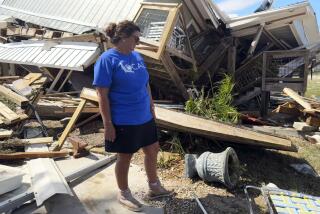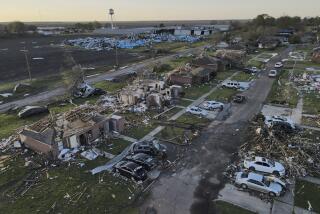Big Easy’s broken but unbowed
New Orleans — AS the jam-packed New Orleans Jazz & Heritage Festival roared to life last weekend, it was easy to believe the City That Care Forgot was resurrected at last.
And that’s true in the parts of the city that most tourists frequent but not everywhere, as a tour I took last weekend showed.
“I’ve been here five years, and it’s my best year ever,” said Traci Batchelor, a former New Orleans resident selling hand-painted silks near the gospel tent at the festival.
Although official figures were not expected until after today, when the annual event ends, regular fest-goers said crowds appeared to equal or exceed those of previous years.
But for visitors who toured parts of the city devastated last summer by Hurricane Katrina, New Orleans looked far from recovered.
Swaths of the Ninth Ward, Lakeview, New Orleans East and other areas looked as though Katrina had just blown in the previous week. They appeared eerily deserted.
Among the scenes: wood-frame houses smashed into one another; boarded-up brick homes next to white trailers furnished by the Federal Emergency Management Agency, where their owners now live; and coolers left on roofs by stranded residents.
Several companies offer tours of Katrina damage. Among them: Gray Line Tours of New Orleans, (800) 535-7786, www.graylineneworleans.com; Tours by Isabelle, (504) 391-3544, www.toursbyisabelle.com; Cajun Encounters Tours, (866) 928-6877 or (504) 834-1770, www.cajunencounters.com; and Celebration Tours, (504) 587-7115. Although duration and prices vary, the tours typically last 2 to 3 1/2 hours and cost $35 to $49 per adult.
Such tours are not without controversy, including legal issues for any that enter the lower Ninth Ward, which I did last weekend on a Tours by Isabelle excursion. I was not aware of such issues when I booked the trip.
Concerned that extra traffic would interfere with residents returning home to make repairs, the City Council in January prohibited paid tours east of the Industrial Canal, which includes the lower Ninth Ward.
“For tourists and tour companies to go down and gawk, it’s just disrespectful,” New Orleans City Council spokeswoman Danae Columbus said, expressing another objection.
Isabelle Cossart, owner of Tours by Isabelle, thinks she is in compliance with the law because her 13-passenger vans stay on North Claiborne Avenue, do not venture onto side streets and do not stop for photos. “I don’t want to be a voyeur,” she said. “It’s not a joy ride.”
Our Isabelle guide, Stanley, a former New Orleans resident whose roots stretch back to the area’s Cajun settlers, doesn’t enjoy conducting the tour, he said. But he said Cossart convinced him that “somebody’s got to tell people what happened.”
And tell he did. As we rode past the unscathed French Quarter and then out to damaged districts, we learned about the art and science of levee building, how New Orleans’ early homes were built to survive floods and why acres of ruined cars now sit under overpasses throughout the city. (Answer: Thousands await stripping for recycling.)
Much of the trip was distressing, but it was also fascinating. These days, more than fun motivates some to visit.
“With us, it was a mission,” said Bill Williams of Highgate, Vt., in the city with his wife. “That’s true of a lot of people.”
More to Read
Sign up for The Wild
We’ll help you find the best places to hike, bike and run, as well as the perfect silent spots for meditation and yoga.
You may occasionally receive promotional content from the Los Angeles Times.






